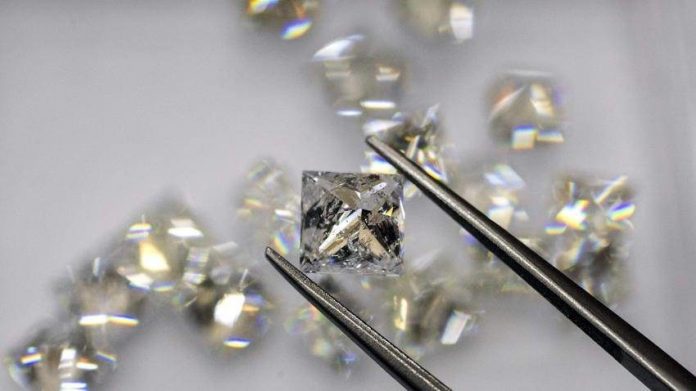A group of scientists led by Oliver Tschauner, a professor of geoscience from the University of Nevada, have discovered a form of super-dense ice known as ice-VII on Earth for the first time. Though ice-VII was known to form in space, and may make up much of ice worlds like Europa, it had only been created in lab conditions on Earth. Tschauner and colleagues findings were published today in Science.
What we know as ice is just one of many chemical structures that frozen water can take. That ice in your soda is technically known as ice-I in which water molecules are arranged in a hexagonal shape. But as water is compressed, the molecules begins to take on different shapes. Ice-VII, which until now has never been found naturally on Earth, has a cubic molecular shape, and is one and a half times as dense as regular ice.
Researchers stumbled onto a native ice-VII sample by accident, inside a diamond formed deep in the Earth’s mantle, as much as 400 miles beneath the crust. The pressure in the mantle is intense, causing diamonds to form from carbon. But sometimes other substances, like water, get trapped inside these diamonds, in what’s known as an incursion.
The mantle is very hot, so there’s no way for ice to form there. In very rare cases, as diamonds travel up through the mantle and crust to the Earth’s surface, they maintain their tight lattice structure, and the water inside them is exposed to low enough temperatures that ice-VII can form.
“Usually the extremely deep minerals that come up to the surface are not stable once they experience low pressures,” George Rossman, a Caltech mineralogist who worked on the study told the LA Times. “They crack and whatever inclusions they had in them are lost. But if a diamond comes up fast enough, it doesn’t change.”
As Rossman and the other researchers were X-raying diamonds to examine them for carbon dioxide incursions, they realized they’d actually discovered naturally occurring ice-VII. “We were all very excited about that,” Tschauner told the LA Times.
“Water in diamonds is not unknown, but finding this very high pressure form of water ice intact, that was really fortuitous,” Rossman told the newspaper. ‘That’s what you call discovery.”















